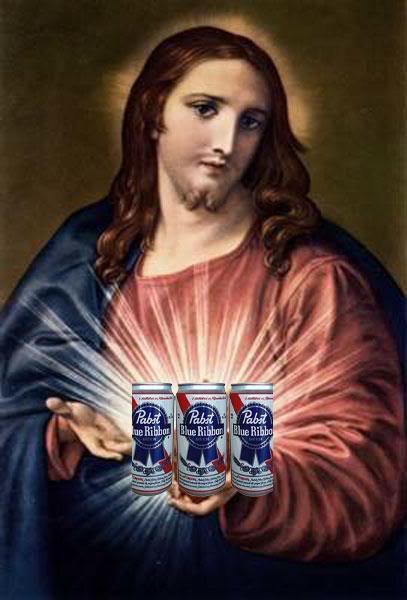Like water into wine, Pabst Blue Ribbon went seriously upscale for its product launch in China, demonstrating the power of positioning. Though the dynamic of consumers’ definitions of who you are and how you relate to competitors is always a factor, opportunities arise for brands to make that definition and claim that mental space for themselves. The jury’s still out since this story’s only a couple weeks old, but I’m anxious to know how this works out for PBR.
A brief history of Pabst Blue Ribbon in America from my perspective:
- born in the late 1800’s in the upper midwest
- a blue collar beer for most of my lifetime
- sales peak in 1977 then fall off dramatically
- enjoying a resurgence among urban hipsters who can’t resist the great taste of irony
- overall a decent brand for its overlord, Miller Brewing

As if from water into wine, PBR goes luxury for China launch.
A brief introduction of Pabst Blue Ribbon in China:
- now called “Blue Ribbon 1844” (reference to Pabst founding date)
- now a luxury brand, a “world famous spirit”
- now sells for $44 per bottle (720-ml bottle, more detailed brew)

Pabst launches "Blue Ribbon 1844" in China
What a clever way to take advantage of a huge, new market – completely re-position the brand for introduction to an audience largely ignorant of PBR’s unpretentious past.
As noted above, this isn’t simply a repackaging of the same product. The March 5 edition of Modern Brewery Age describes the person and process nicely. They hired Alan Kornhauser, of Jos. Huber, Anchor Brewing, Portland Brewing, August Schell and others, to work in China six months of the year. “We just produced China’s first real specialty beer, an all-malt, reddish brown strong (15.7 plato) ale, dry hopped with Cascade (38 IBU) and aged in new uncharred American whiskey barrels,” MBA quotes him. They’re only selling Blue Ribbon 1844 in China.
So they’ve re-positioned the Pabst Blue Ribbon brand in an honest and meaningful way. That’s even better than clever.